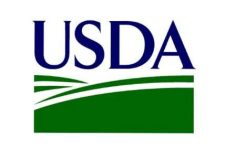The Prairie Acre at the University of Kansas is the last remaining piece of native prairie on the Lawrence campus. Tucked into the hillside behind Blake and Twente halls, this one-third-acre parcel was designated in 1932 as a landscape to remain undeveloped and protected by the university. For the last eight decades it has sat preserved, but gradually forgotten, unable to maintain its original diversity of native species. Encroaching trees and fescue, and hesitation to adequately burn the native remnant, has led to an 80 percent loss of species.
However, a student project of the KU Environmental Studies Program Capstone course has revived efforts to not only preserve but restore the Prairie Acre, implement a long-term maintenance plan and re-establish the landscape as a historical fixture that provides diverse and hands-on learning opportunities.
Through a collaboration among the Environmental Studies Program, Kansas Biological Survey and KU Center for Sustainability, the first steps of restoring the Prairie Acre took place this fall. Volunteers collected, sorted and cleaned seeds for the more than 100 species of plants that will be cultivated in a greenhouse and planted at the site this spring.
The project has also launched a crowdfunding initiative through KU Endowment with a goal to raise $10,000 by mid-January. An initial donation of $2,500 to kick off the campaign was made by the Historic Mount Oread Friends, a nonprofit organization that works to preserve the historic architecture and open spaces of the KU campus.
“Although we have collected seeds and will be engaging volunteers from campus and the community throughout the process,” said Center for Sustainability Director Jeff Severin, “donor support is essential to the success of the project. Contributions will go towards supplies, additional plant materials, overall coordination and enhancements at the Prairie Acre needed to create the inviting, educational and active site we envision for this project.”
Tax-deductible contributions toward the Prairie Acre Restoration Project can be made online. All funds raised will help restore this culturally and ecologically significant site to one of diverse tallgrass species and engaging and meaningful educational opportunities for KU students and the community.
Planned enhancements to the site include a learning garden and educational kiosk, introducing visitors to the site to prairie species, the restoration process, and the natural and cultural history of the Prairie Acre. These elements will be installed in the first phase of the project through the generosity of lead donors Douglas May and Catherine Schwoerer, both School of Business faculty.
“The return of native wildflowers as part of this restoration is very important to us,” said May about the donation. “We are excited to contribute to a learning garden and interpretive signage that will help educate the public on the benefits of native prairie ecosystems and encourage the use of native wildflowers and grasses in home gardens.”
To help coordinate these activities and ensure the project gets off to a strong start, graduate student and project coordinator Laurel Sears will oversee and facilitate restoration activities, including site assessment and monitoring of species, removal of invasives and establishment of native tallgrasses and wildflowers.
“The Prairie Acre Restoration project will help students, KU staff and community members engage with this historical campus site, as well as connect us all to this diminishing ecosystem,” said Sears of her new post. “I love that we get to ring in KU’s 150th year by restoring a piece of unplowed prairie, right on campus.”
For more information and updates on the Prairie Acre Restoration Project, visit the Center for Sustainability website.



